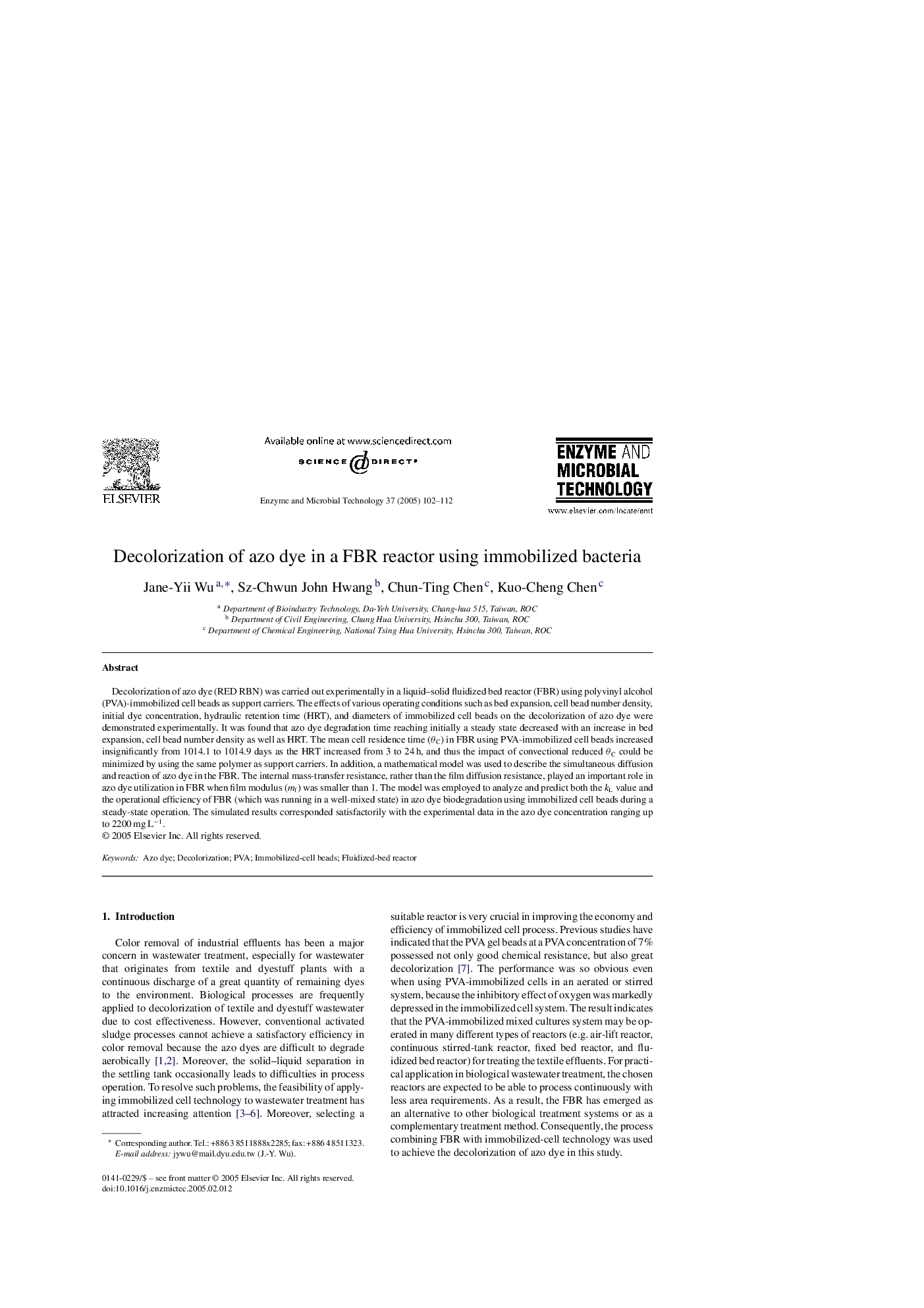| Article ID | Journal | Published Year | Pages | File Type |
|---|---|---|---|---|
| 10233564 | Enzyme and Microbial Technology | 2005 | 11 Pages |
Abstract
Decolorization of azo dye (RED RBN) was carried out experimentally in a liquid-solid fluidized bed reactor (FBR) using polyvinyl alcohol (PVA)-immobilized cell beads as support carriers. The effects of various operating conditions such as bed expansion, cell bead number density, initial dye concentration, hydraulic retention time (HRT), and diameters of immobilized cell beads on the decolorization of azo dye were demonstrated experimentally. It was found that azo dye degradation time reaching initially a steady state decreased with an increase in bed expansion, cell bead number density as well as HRT. The mean cell residence time (θC) in FBR using PVA-immobilized cell beads increased insignificantly from 1014.1 to 1014.9 days as the HRT increased from 3 to 24 h, and thus the impact of convectional reduced θC could be minimized by using the same polymer as support carriers. In addition, a mathematical model was used to describe the simultaneous diffusion and reaction of azo dye in the FBR. The internal mass-transfer resistance, rather than the film diffusion resistance, played an important role in azo dye utilization in FBR when film modulus (mf) was smaller than 1. The model was employed to analyze and predict both the kL value and the operational efficiency of FBR (which was running in a well-mixed state) in azo dye biodegradation using immobilized cell beads during a steady-state operation. The simulated results corresponded satisfactorily with the experimental data in the azo dye concentration ranging up to 2200 mg Lâ1.
Related Topics
Physical Sciences and Engineering
Chemical Engineering
Bioengineering
Authors
Jane-Yii Wu, Sz-Chwun John Hwang, Chun-Ting Chen, Kuo-Cheng Chen,
